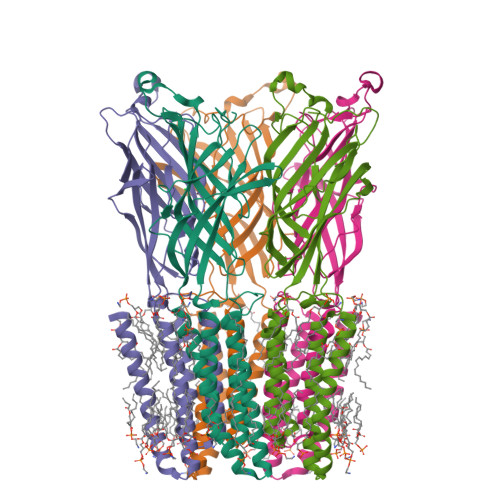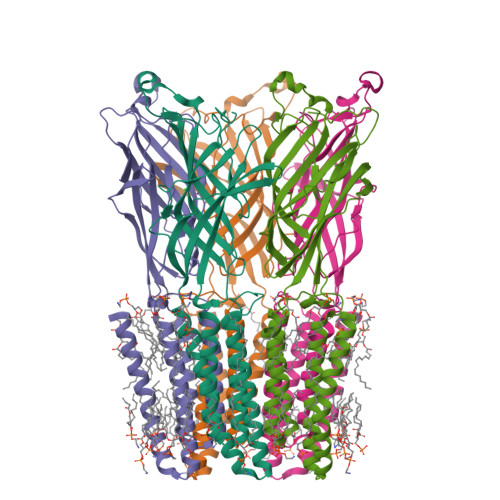Cryo-EM structures of prokaryotic ligand-gated ion channel GLIC provide insights into gating in a lipid environment.
Bharambe, N., Li, Z., Seiferth, D., Balakrishna, A.M., Biggin, P.C., Basak, S.(2024) Nat Commun 15: 2967-2967
- PubMed: 38580666
- DOI: https://doi.org/10.1038/s41467-024-47370-w
- Primary Citation of Related Structures:
8I41, 8I42, 8I47, 8I48, 8JJ3, 8WCQ, 8WCR - PubMed Abstract:
GLIC, a proton-activated prokaryotic ligand-gated ion channel, served as a model system for understanding the eukaryotic counterparts due to their structural and functional similarities. Despite extensive studies conducted on GLIC, the molecular mechanism of channel gating in the lipid environment requires further investigation. Here, we present the cryo-EM structures of nanodisc-reconstituted GLIC at neutral and acidic pH in the resolution range of 2.6 - 3.4 Å. In our apo state at pH 7.5, the extracellular domain (ECD) displays conformational variations compared to the existing apo structures. At pH 4.0, three distinct conformational states (C1, C2 and O states) are identified. The protonated structures exhibit a compacted and counter-clockwise rotated ECD compared with our apo state. A gradual widening of the pore in the TMD is observed upon reducing the pH, with the widest pore in O state, accompanied by several layers of water pentagons. The pore radius and molecular dynamics (MD) simulations suggest that the O state represents an open conductive state. We also observe state-dependent interactions between several lipids and proteins that may be involved in the regulation of channel gating. Our results provide comprehensive insights into the importance of lipids impact on gating.
Organizational Affiliation:
School of Biological Sciences, Nanyang Technological University, Singapore, 637551, Singapore.




















